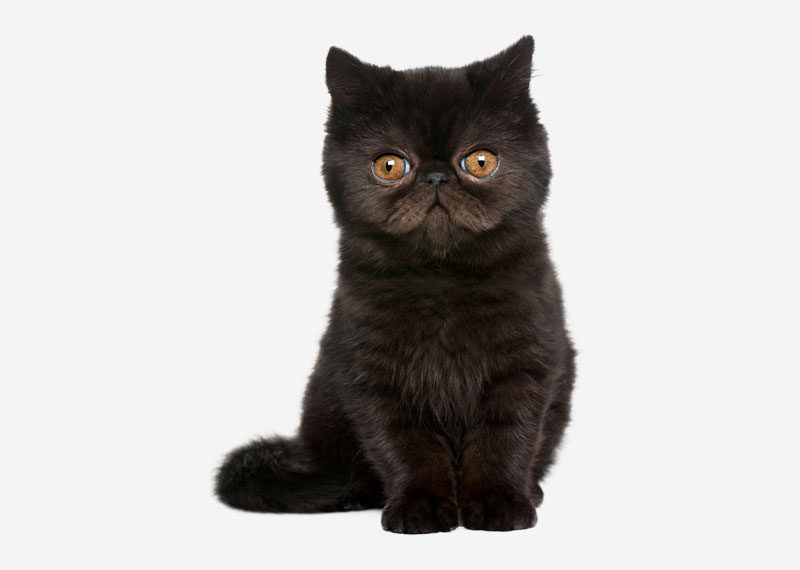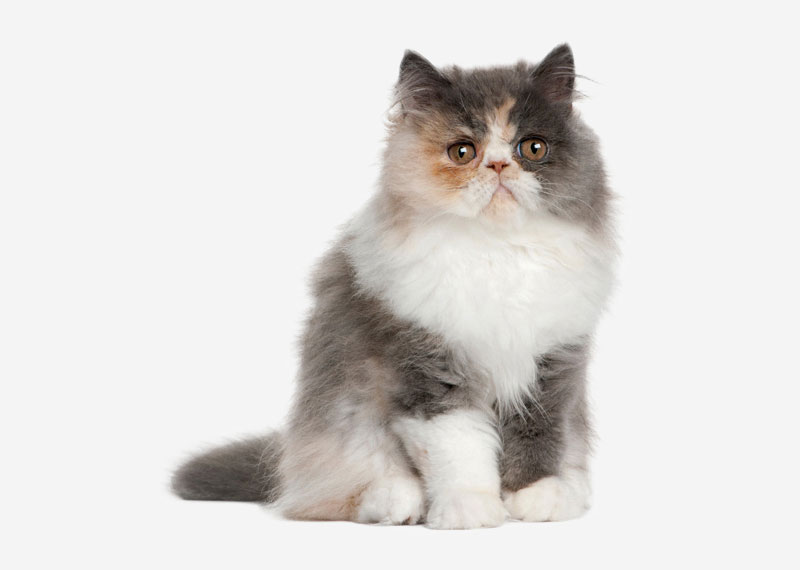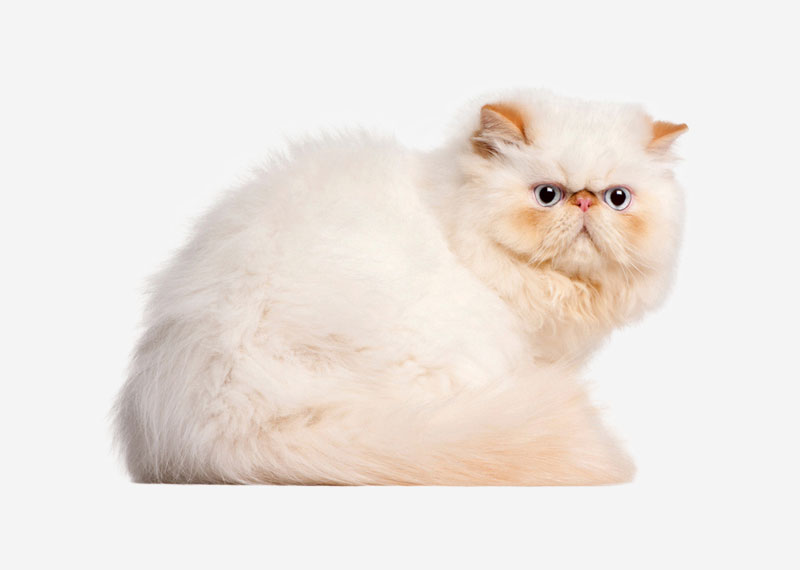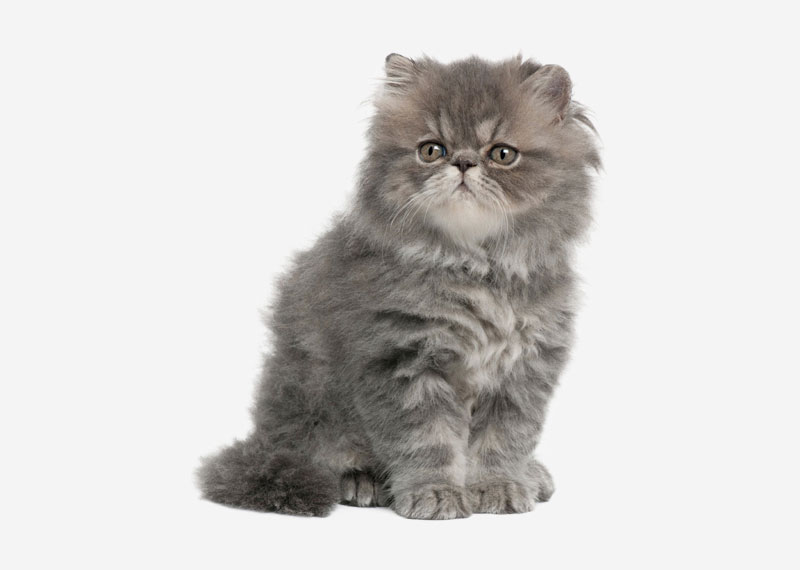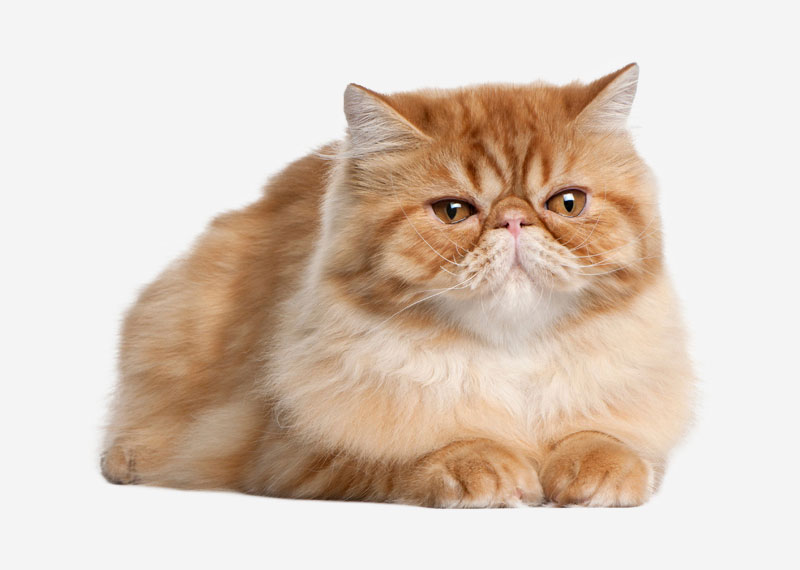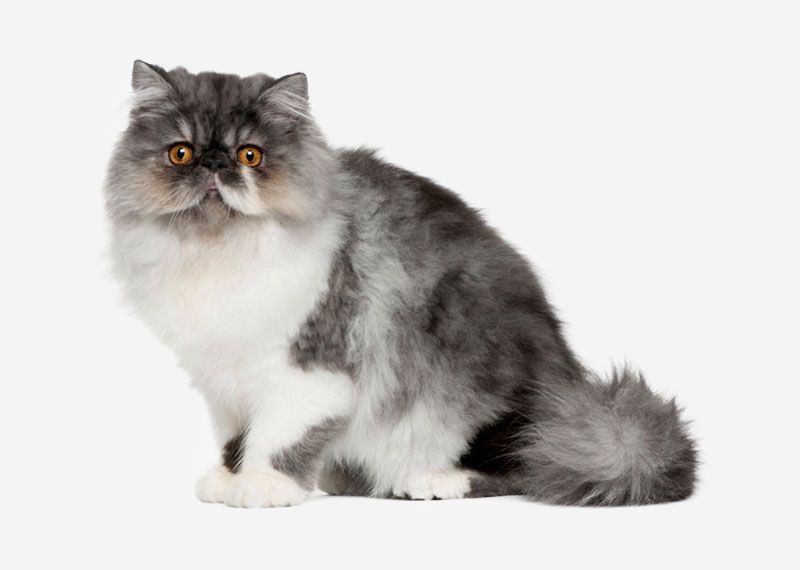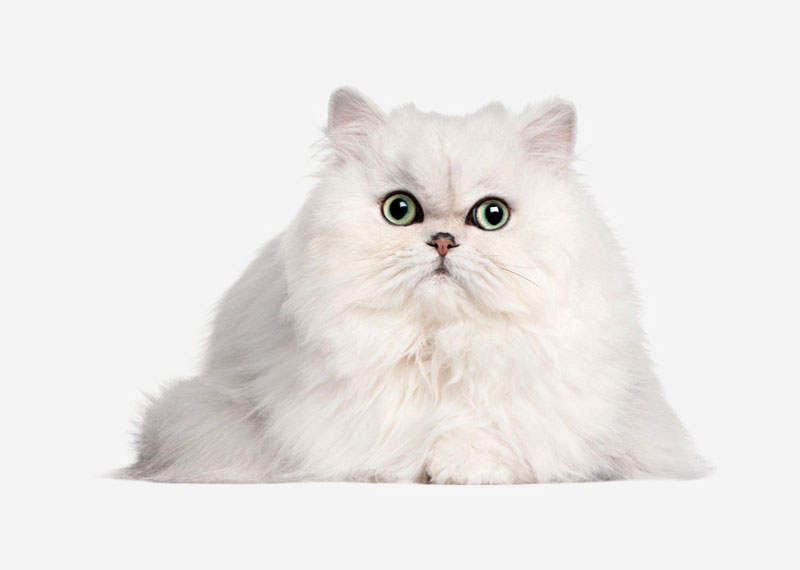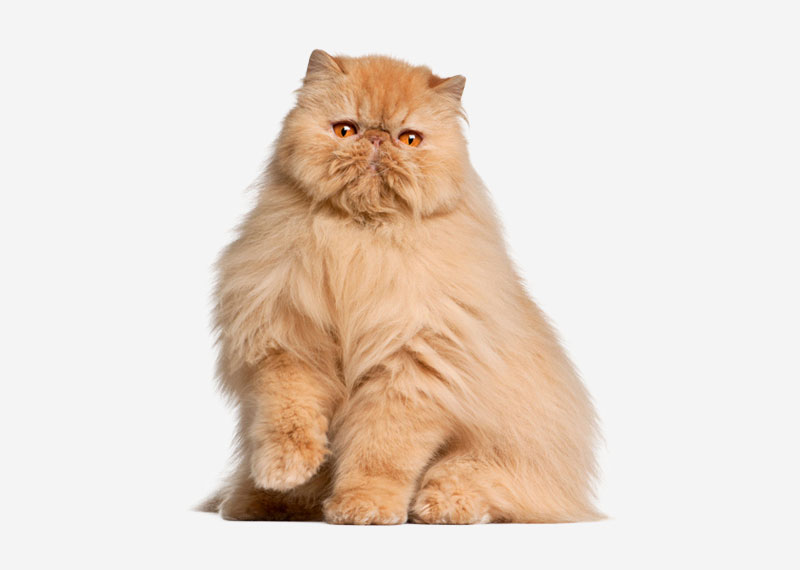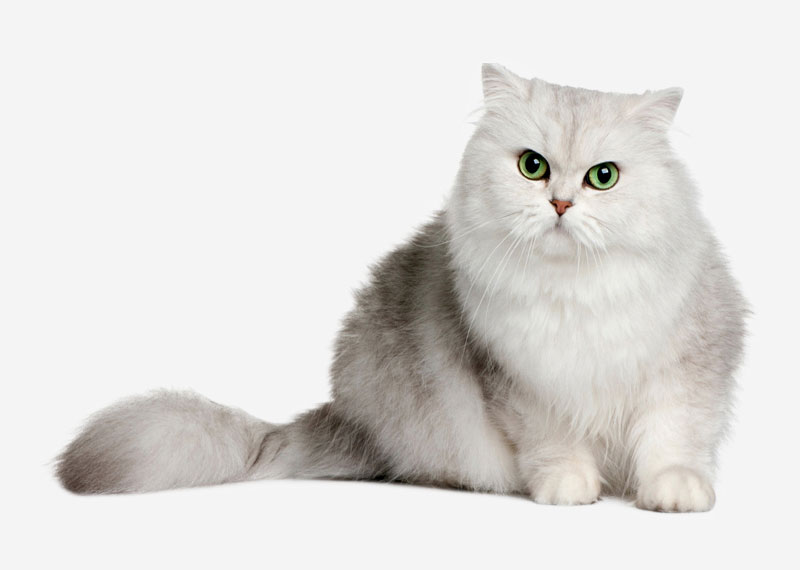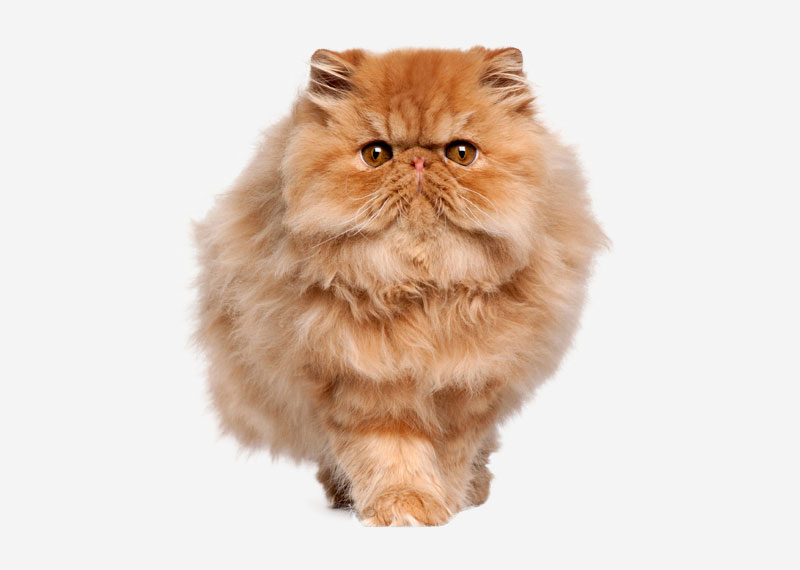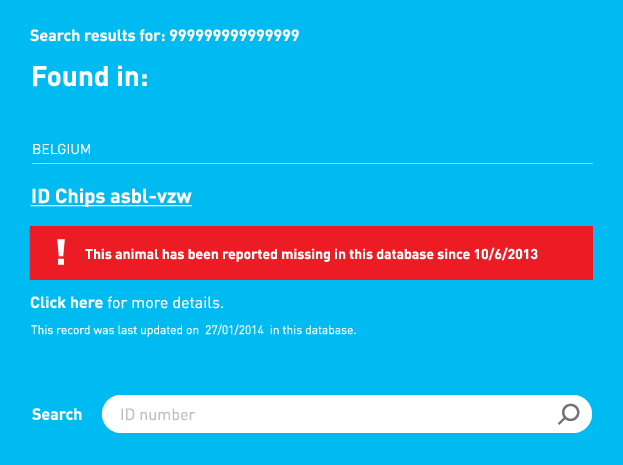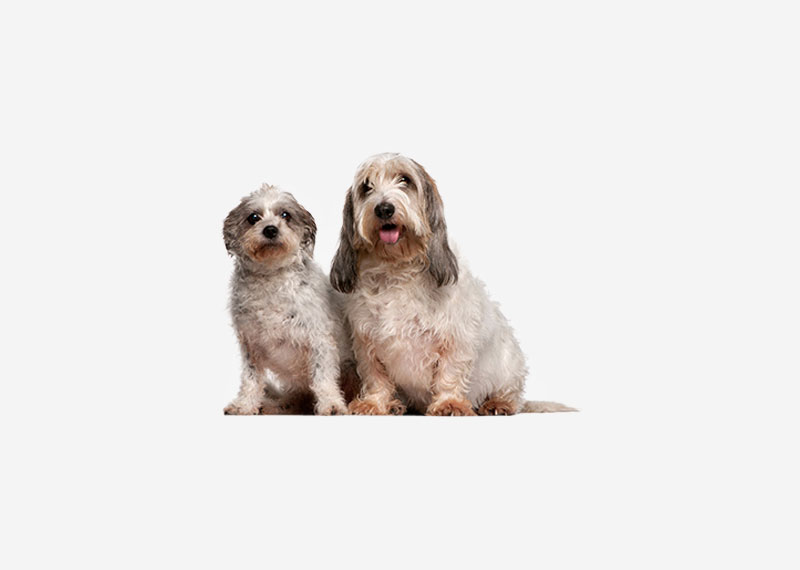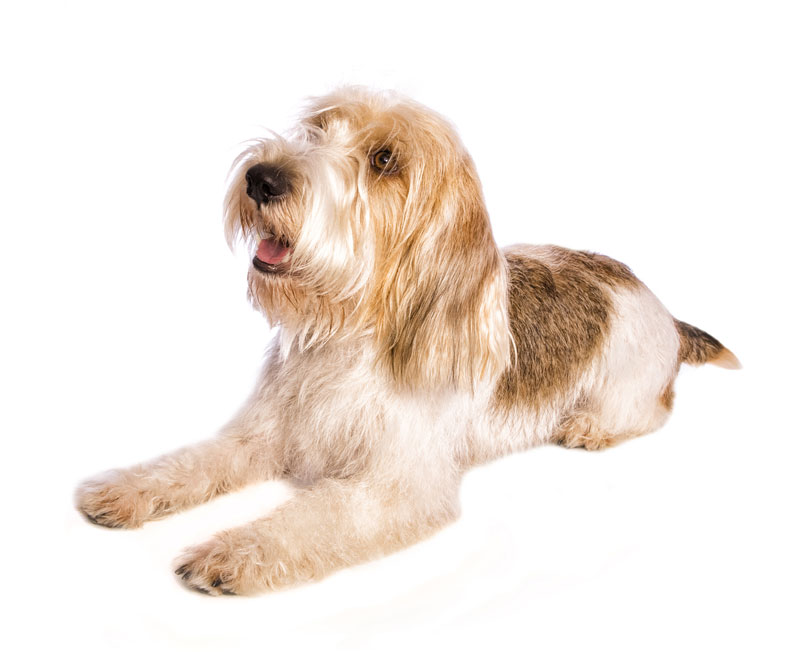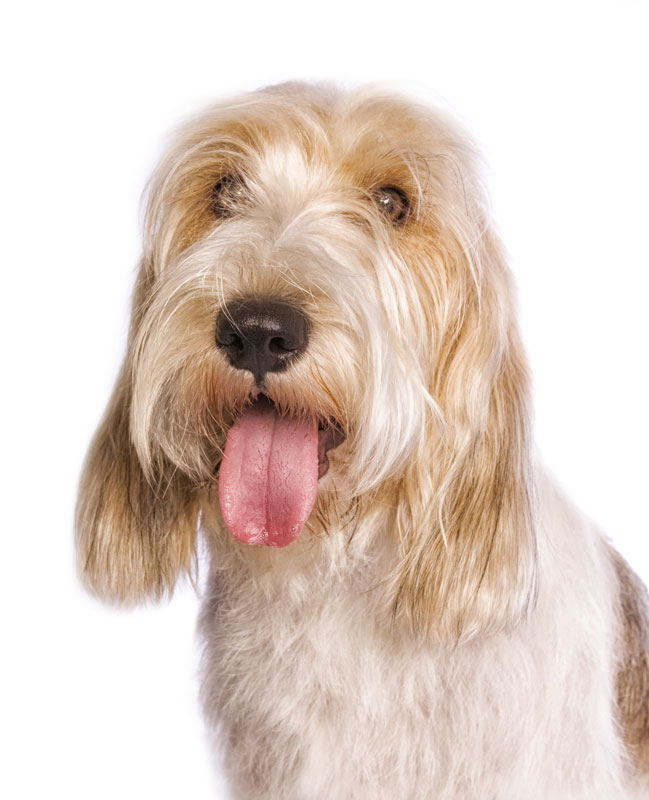Super User
Persian
The Persian is a long-haired breed of cat characterized by its round face and shortened muzzle. Its name refers to Persia, the former name of Iran, where similar cats are found.Recognized by the cat fancy since the late 19th century, it was developed first by the English, and then mainly by American breeders after the Second World War. In Britain, it is called the Longhair or Persian Longhair. The selective breeding carried out by breeders has allowed the development of a wide variety of coat colors, but has also led to the creation of increasingly flat-faced Persians. Favored by fanciers, this head structure can bring with it a number of health problems. As is the case with the Siamese breed, there have been efforts by some breeders to preserve the older type of cat, the traditional breed, having a more pronounced muzzle, which is more popular with the general public. Hereditary polycystic kidney disease is prevalent in the breed, affecting almost half the population in some countries.
The placid and unpretentious nature of the Persian confers a propensity for apartment living. It has been the most popular breed in the United States for many years but its popularity has seen a decline in Britain and France.
Health
Pet insurance data from Sweden puts the median lifespan of cats from the Persian group (Persians, Chinchilla, Himalayan and Exotic) at just above 12.5 years. 76% of this group lived to 10 years or more and 52% lived to 12.5 years or more. Vet clinic data from England shows an average lifespan of 12-17 years, with a median of 14.1.
The modern brachycephalic Persian has a large rounded skull and shortened face and nose. This facial conformation makes the breed prone to breathing difficulties, skin and eye problems and birthing difficulties. Anatomical abnormalities associated with brachycephalic breeds can cause shortness of breath. Malformed tear ducts causes epiphora, an overflow of tears onto the face, which is common but primarily cosmetic. It can be caused by other more serious conditions though. Entropion, the inward folding of the eyelids, causes the eyelashes to rub against the cornea, and can lead to tearing, pain, infection and cornea damage. Similarly, in upper eyelid trichiasis or nasal fold trichiasis, eyelashes/hair from the eyelid and hair from the nose fold near the eye grow in a way which rubs against the cornea. Dystocia, an abnormal or difficult labor, is relatively common in Persians. Consequently, stillbirth rate is higher than normal, ranging from 16.1% to 22.1%, and one 1973 study puts kitten mortality rate (including stillborns) at 29.2%. A veterinary study in 2010 documented the serious health problems caused by the brachycephalic head.
As a consequence of the BBC program Pedigree Dogs Exposed, cat breeders have too come under pressure from veterinary and animal welfare associations, with the Persian singled out as one of the breeds most affected by health problems. Animal welfare proponents have suggested changes to breed standards to prevent diseases caused by over or ultra-typing, and prohibiting the breeding of animals outside the set limits. Apart from the GCCF standard that limits high noses, TICA and FIFe standards require nostrils to be open, with FIFe stating that nostrils should allow "free and easy passage of air." Germany's Animal Welfare Act too prohibits the breeding of brachycephalic cats in which the tip of the nose is higher than the lower eyelids.
Polycystic kidney disease (PKD) which causes kidney failure in affected adult cats has an incidence rate of 36–49% in the Persian breed. Cysts develop and grow in the kidney over time, replacing kidney tissues and enlarging the kidney. Kidney failure develops later in life, at an average age of 7 years old (ranging from 3 to 10 years old). Symptoms include excessive drinking and urination, reduced appetite, weight loss and depression. The disease is autosomal dominant and DNA screening is the preferred method of eliminating the gene in the breed. Because of DNA testing, most responsible Persian breeders now have cats that no longer carry the PKD gene, hence their offspring also do not have the gene. Before DNA screening was available, ultrasound was done. However, an ultrasound is only as good as the day it's done, and many cats that were thought to be clear, were in fact, a carrier of the PKD gene. Only DNA screening and then breeding negative to negative for the PKD gene will produce negative kittens which effectively removes this gene from the breeding pool has allowed some lines and catteries to eliminate the incidence of the disease.
Hypertrophic cardiomyopathy (HCM) is a common heart disease in all cats. It is hereditary in the Maine Coon and American Shorthair, and likely the Persian. The disease causes thickening of the left heart chamber, which can in some instances lead to sudden death. It tends to affect males and mid to old-aged individuals. Reported incidence rate in Persians is 6.5%. Unlike PKD which can be detected even in very young cats, heart tests for HCM have to be done regularly in order to effective track and/or remove affected individuals and their offspring from the breeding pool.
The age at the first cardiac event was significantly lower in Maine Coons (2.5 years) versus other breeds (7 years). In Sphynx, the age at the time of diagnosis was 3.5 years. Concerning sudden death solely, Maine Coon cats died younger than other breeds. No sudden deaths were reported in Chartreux and Persian cats in this study. Sudden death was observed in only 3 breeds—Maine Coon, Domestic Shorthair, and Sphynx. All cats surviving longer than 15 years of age were Domestic Shorthair, Persians, or Chartreux.
Early onset Progressive retinal atrophy is a degenerative eye disease with an autosomal recessive mode of inheritance in the Persian. Despite a belief among some breeders that the disease is limited to Chocolate and Himalayan lines, there is no apparent link between coat color in Persians and the development of PRA. Basal cell carcinoma is a skin cancer which shows most commonly as a growth on the head, back or upper chest. While often benign, rare cases of malignancy tends to occur in Persians. Blue smoke Persians are predisposed to Chédiak-Higashi syndrome. White cats, including white Persians, are prone to deafness, especially those with blue eyes. Persians are more prone to side effects of ringworm drug Griseofulvin.
As with in dogs, hip dysplasia affects larger breeds such as Maine Coons and Persians. But the small size of cats means that they tend not to be as affected by the condition. Persians are susceptible to malocclusion (incorrect bite), which can affect their ability to grasp, hold and chew food. Even without the condition the flat face of the Persian can make picking up food difficult, so much so that specially shaped kibble have been created by pet food companies to cater to the Persian.
Other conditions which the Persian is predisposed to are listed below:
- Dermatological – Primary seborrhoea, Idiopathic periocular crusting, Dermatophytosis(ringworm), Facial fold pyoderma, Idiopathic facial dermatitis (aka dirty face syndrome), Multiple epitrichial cysts(eyelids)
- Ocular – Coloboma, Lacrimal punctal aplasia, Corneal sequestrum, Congenital cataract
- Urinary – Calcium oxalate urolithiasis (Feline lower urinary tract disease)
- Reproductive – Cryptorchidism
- Gastrointestinal – Congenital portosystemic shunt, Congenital polycystic liver disease (associated with PKD)
- Cardiovascular – Peritoneopericardial diaphragmatic hernia
- Immunological – Systemic lupus erythematosus
- Neurological – Alpha-mannosidosis
- Neoplastic – Basal cell carcinoma, Sebaceous gland tumours
Although these health issues are common, many Persians do not exhibit any of these problems.
In popular culture
- A species of Pokémon is named after the breed
- Mr. Tinkles, the antagonist from Cats & Dogs and Cats & Dogs: The Revenge of Kitty Galore
- Snowbell from Stuart Little
- The Cat King from The Cat Returns
- Crookshanks, Hermione's magical familiar from the Harry Potter series, appears to resemble a Persian cat. Professor Dolores Umbridge also has a fondness for Persians, with many decorative plates in her office depicting them. Her Patronus is also a Persian.[49]
- The white Persian cat belonging to Ernst Stavro Blofeld in the James Bond series
- In the animated movie Over the hedge there is a Persian cat named Tiger in the movie.
- The original Mr. Bigglesworth, belonging to Dr. Evil, a spoof of the aforementioned James Bond villain in the Austin Powers movies.
- In the show My Little Pony Friendship is Magic, Rarity, one of the main characters, has a pet Persian cat named Opalescence.
- Duchess, the Hoggetts' spoiled cat and the main antagonist of Babe.
- Sassy, the family's Himalayan cat in the book Homeward Bound: The Incredible Journey written by Sheila Burnford and movies of the same name. Homeward Bound: The Incredible Journey and Homeward Bound II: Lost in San Francisco.
- Mme. Rubens-Chatte (voiced by Hermione Gingold), she was Meowrice's Sister from Gay Purr-ee .
The classic animated character Garfield is an exotic short haired Persian cat.
Peruvian Hairless Dog
The Peruvian Hairless Dog is a breed of dog with its origins in Peruvian pre-Inca cultures. It is one of several breeds of hairless dog.
History
This is an ancient breed. Although it is often perceived to be an Incan dog because it is known to have been kept during the Inca Empire,
they were also kept as pets in pre-Inca cultures from the Peruvian coastal zone. Ceramic hairless dogs from the Chimú, Moche (culture), and Vicus (Peru) culture are well known. Depictions of Peruvian hairless dogs appear around 750 A.D. on Moche (culture) ceramic vessels and continue in later Andean ceramic traditions.
The main area of the Inca Empire (the mountains) is too cold for the natural existence of the dogs.
The Spanish conquest of Peru nearly caused the extinction of the breed. The dogs survived in rural areas, where the people believed that they held a mystical value.
In recent years, the Fédération Cynologique Internationale (FCI) accepted the breed and adopted an official breed standard. Before that time, in the United States, some enthusiasts created another type of Peruvian hairless dog, the Peruvian Inca Orchid. The Peruvian Inca Orchid is recognized by the AKC. The club UKC also recognized the breed in recent years.
Pet Friendly Lodging Guide
Most hotels in Continental Europe and Scandinavia are pet-friendly, but this is not always the case. When you are searching for a pet-friendly hotel or B&B – take the time to read the fine print before booking a room. Keep in mind that a published pet policy may be lacking and you must first call the hostel or hotel for clarification.
Pet Insurance Basics
Our “furry children” deserve every opportunity to live a long and healthy life. One way that we can ensure this is to provide for their medical care. In uncertain economic times, this can be difficult for some families. Trips to the veterinarian, especially for emergency care, can be expensive and costs continue to rise. However, pet insurance can be an affordable option for providing care during the best and worst of times. Let’s take a look at the many options offered by pet insurance.
Peterbald
The Peterbald is a cat breed of Russian origin. Peterbalds have an elegantly slim graceful and muscular build. They have a narrow and long head with a straight profile, almond-shaped eyes, wedge-shaped muzzle, and big set-apart ears. They have a long whip-like tail, webbed feet and oval paws that allow them to grasp objects and open levered doorknobs. They are somewhat similar in appearance to Oriental Shorthair cats.
History
The Peterbald breed was created during the latter half of 1994 in St. Petersburg, Russia, the result of an experimental mating of a Don Sphynx (also known as Don Sphynx, Donskoy or Donsky) male named Afinogen Myth and an Oriental Shorthair female World Champion named Radma von Jagerhov, by Russian felinologist Olga S. Mironova. The first two litters produced four Peterbald kittens: Mandarin iz Murino, Muscat iz Murino, Nezhenka iz Murino and Nocturne iz Murino. These four Peterbalds were the founders of the breed.In 1996, the breed was adopted in the Russian Selectional Feline Federation (SFF) and given a standard and an abbreviation (PBD). In 1997 it was adopted in The International Cat Association (TICA) with the abbreviation PD, and in 2003 in the World Cat Federation (WCF) with the abbreviation PBD. Other used handles of the breed are PTB, PD and PSX.These days the breed develops in the direction of modern Oriental and Siamese types, that is to say a long muzzle, large set-apart ears, flat cheekbones, and an elegant body on long legs. Therefore, all standards for this breed encourage mating with Oriental and Siamese cats and semi-longhair variations of those (such as Balinese (cat) and Javanese (cat)). The Balinese and Javanese were eliminated from the acceptable outcross list in 2005. The Peterbald was accepted for Championship class competition, effective May 1, 2009, in the American Cat Fanciers Association (ACFA) in August 2008. Effective May 2008, TICA recognizes the "brush coat" Peterbald for Championship competition.
Health
Not all cat registries recognise the Peterbald and there are some concerns about the genetic health of the breed. Some people suspect that the dominant genetic mutation causing hairlessness in Peterbalds and Donskoys could cause feline ectodermal dysplasia in its homozygous form, causing problems including poor dentition and compromised ability to lactate.
Petit Basset Griffon Vendéen
The Petit Basset Griffon Vendéen (/pɛˌtiː bæˌseɪ ɡrɪˌfɒn vɑːndeɪˈɑːn/ pe-TEE bas-SAY gri-FON vahn-day-AHN), or dog, is a breed of dog of the scent hound type, bred to trail hares in bramble-filled terrain of the Vendée district of France.
Health
The UK Kennel Club conducted a health survey of Basset Griffon Vendéens (both Petit and Grand varieties combined) in 2004. The Petit Basset Griffon Vendéen (PBGV) Club of America has conducted two health surveys, one in 1994 and one in 2000. The club is currently conducting another survey. These are apparently the only completed or on-going health surveys for Basset Griffon Vendéens (as of July 2007).
Mortality
Average longevity of PBGVs in the 2000 Club of America survey was 12.7 years (standard deviation 3.9). Sample size was not clear, but it appeared to be 45 dogs. No longevity data were collected in the 1994 survey. There was no information on causes of death.
Average longevity of 76 deceased Basset Griffon Vendéens (both varieties) in the 2004 UK Kennel Club survey was 12.1 years (maximum 17.3 years). Leading causes of death were cancer (33%), old age (24%), and cardiac (7%).
Compared to surveyed longevities of other breeds of similar size, Basset Griffon Vendéens have a typical or somewhat higher than average life expectancy.
Morbidity
In the PBGV Club of America 2000 survey, the most common diseases reported by owners of 640 dogs were persistent pupillary membranes, recurrent ear infections, hypothyroidism, neck pain, and epilepsy.
Among 289 live Basset Griffon Vendéens (both varieties) in the 2004 UKC survey, the most common health issues noted by owners were reproductive, dermatologic (dermatitis and mites), and aural (otitis externa, excessive ear wax, and ear mites).
Care
They should have daily walks to burn off excess energy. They need to be brushed regularly, but not daily, to avoid matting and tangles. To keep the coat well groomed it must be stripped. Hairs must be pulled out of the coat using either a special stripping tool or the finger and thumb. The coat is shallow rooted and is made to come out if trapped, so this grooming method causes no pain. They need regular ear cleanings to prevent yeast infections and clipping of the claws is normally needed once or twice a month.
Part of the charm of a PBGV is its tousled, unkempt appearance.
Pets and their Famous Humans
Famous people throughout history have had pets, from movie stars to kings and politicians. Their love and devotion to these four-legged ‘fur babies’ makes celebrities seem a little more like the rest of us. Here is a small sample across history of famous persons and their beloved critters.
Phalène
The Phalène is the drop-eared version of the Papillon, a toy breed also known as the Butterfly Dog or the Continental Toy Spaniel (Epagneul Nain Continental).
History
The Phalène is the earliest form of the Papillon; the appearance of the erect-eared variety was not documented until the 16th century, by which time the Phalène had been portrayed in numerous paintings, particularly in portraits of the wealthy by Old Masters and their students. Belgium, France, Spain, and Italy have all been credited with the creation or development of Butterfly Dogs. The Papillon gained popularity after the turn of the nineteenth century.By the middle of the 20th century, the Papillon’s popularity had far outstripped that of the Phalène, which sank low enough into obscurity to become endangered. Fortunately, the breed had its fanciers and did not slip into extinction. At some point the variety was named phalène or ‘night moth’.The 21st century has seen a revival of interest in the Phalène, with its fanciers pointing out that in countries where it is judged together with the Papillon, judges must be familiar enough with the breed standard to appreciate the qualities of a well-bred Phalène, and not confuse its dropped ears with those of a semi-erect eared Papillon, which would suggest a Fault.
Pharaoh Hound
The Pharaoh Hound is a breed of dog and the national hound of the Mediterranean nation of Malta. Its native name is Kalb tal-Fenek (plural: Kilab tal-Fenek) in Maltese language, which means "Rabbit dog". The dog is traditionally used by some Maltese men for hunting.Based on DNA analysis, the breed has no link with Ancient Egypt. However, a popular myth holds that the breed is descended from the Tesem, one of the ancient Egyptian hunting dogs. Some believe the there are similarities between the breed and images of dogs found on the walls of Art of ancient Egypt. This myth proposes that the Pharaoh Hound was brought by the Phoenicians to Malta, where it has existed for over 2,000 years.The breed has variously been classified as a member of the sighthound group.
History
In 1647 Giovanni Francesco Abela, in his Della Descrittione di Malta isola nel Mare Siciliano: con le sue antichità, ed altre notizie, wrote "... we have the dogs called Cernechi, much valued for rabbit-hunting, which are often in demand as far away as France, mainly for [use in] steep and stony mountain terrain". Authors such as Cecil Camilleri have taken this to refer to the Kelb tal-Fenek. The modern Cirneco dell'Etna is a Sicily breed, very similar in structure and appearance, but somewhat smaller (43cm - 51cm) than the Kelb tal-Fenek.In Britain, the first two specimens of the breed were brought from Malta in the 1920s, but no litter was bred. Again, some dogs were imported to the UK in the early 1960s, and the first litter was born in 1963. The breed standard was recognised by The Kennel Club in 1974. The breed was called the Pharaoh Hound although this name was already used by the Fédération Cynologique Internationale as an alternative name for the Ibizan Hound at that time. When the FCI abolished this name in 1977 and decided to call the Ibizan Hound exclusively by its original Spanish language name Podenco Ibicenco, the term Pharaoh Hound was transferred to the Kelb tal-Fenek, whose breed standard had been recognised by the FCI at the same time.There are a number of breeds similar to the Pharaoh Hound in the Mediterranean area, including the Cirneco in Sicily. Others include the Podenco Ibicenco, the Podenco Canario and the Portuguese Podengo. Each breed is slightly different with physical characteristics that match the terrain the dogs hunt on. It is not clear whether those breeds have descended from the same ancestral lines or whether their similarities have developed due to similar environmental conditions.
Health
Pharaoh hounds, being somewhat uncommon outside of the Maltese Islands of Malta and Gozo, and because they are not profitable for commercial breeding, have not been subjected to as much irresponsible breeding as some more popular breeds. Breeders try hard to prevent hereditary diseases from entering the gene pool. Pharaohs are basically free from genetic diseases. Reputable breeders continue to test their breeding stock for genetic conditions such as Hip dysplasia (canine), luxating patellas, and myriad eye conditions just to ensure that these disorders do not become a problem. Reputable breeders should be able to show documentation of health screening performed on their breeding dogs. Note that Pharaohs, like most sighthounds, are sensitive to barbiturate anaesthetics. Their ears are thin and prone to frostbite when in cold climates.
Life expectancy is about 12 to 14 years.





























